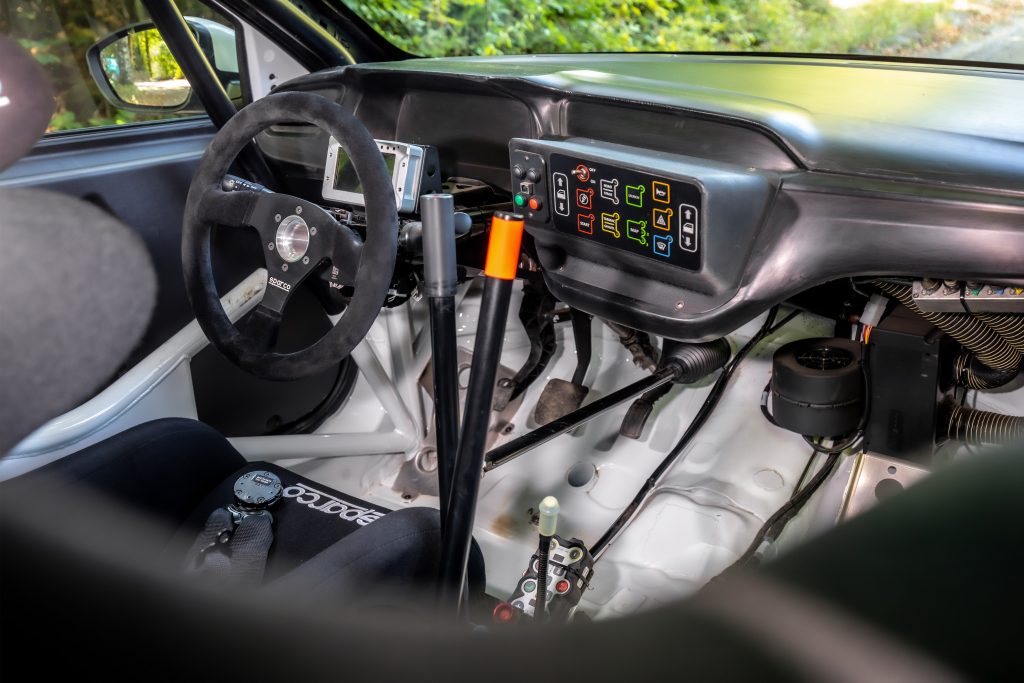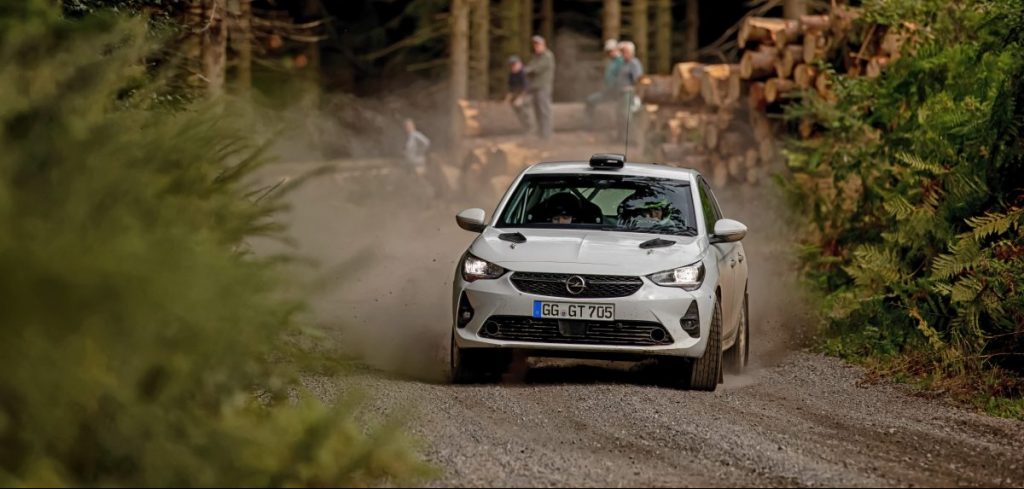Opel Motorsport is due to homologate its Corsa Rally4 in December, marking the replacement of the brand’s ADAM R2. The new car has been developed according to the new Rally4 regulations, which replace the R2 class.
Instead of the high-revving, four-cylinder, naturally aspirated engine from the ADAM R2, the Corsa Rally4 has a 1.2-liter, three-cylinder, turbocharged gasoline engine. Based on the production power unit, the engine produces 208hp and 290Nm meters of torque. Power is transmitted from the engine to the front wheels via a three-way adjustable limited slip differential and a sequential 5-speed gearbox. Suspension is provided by a combination of Eibach springs and Ohlins dampers.
Opel Motorsport and PSA Motorsport (whose parent company now owns Opel) say they recently carried extensive test drives with the Corsa Rally4 in the south of France. Over five days, the teams covered more than 1,000km on gravel and asphalt roads in changing conditions.
Opel Motorsport test driver Marijan Griebel reached the following conclusions on the new car: “The Corsa Rally4 is very easy to drive and reacts well to changes in set-up. I immediately had confidence in the car. Thanks to the longer wheelbase, the Corsa is more stable in fast corners than the ADAM R2 and yet very agile. The turbo engine is great and feels very powerful, especially going uphill. Thanks to the higher torque and the much wider rev band, the driver has to shift less than with a comparable non-turbo. The traction is also very good. Altogether, the Corsa Rally4 is a capable, fast rally car. The test drives were very productive and I had a lot of fun.”
Production of customer cars is scheduled to begin immediately after homologation. Opel Motorsport director Jörg Schrott noted, “The Corsa Rally4 was also developed with the lowest possible running costs in mind. That saves customers’ budgets and also ensures an optimum price-performance ratio.”
Meanwhile, M-Sport has confirmed that its upcoming Rally3 car will feature a 1.5-liter, three-cylinder, turbocharged engine, rather than the 1.0-liter I3 used in its current cars. It was originally planned to use an update of the existing engine, but a late rule change by the FIA to allow capacities between 1 liter and 1.5 liters made the large unit the logical option.




